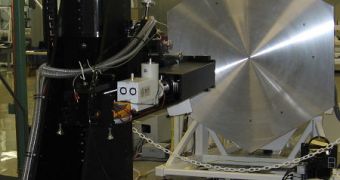The NASA James Webb Space Telescope (JWST) is already helping to improve the world. Though its advanced technology is created to observe the early Universe, experts have already found a way to apply it to the field of ophthalmology, or eye health.
If completed, this telescope will be the American space agency's most advanced infrared observatory, capable of conducting studies in a time when the Universe was only a fraction of its current age.
In order to construct the monumental spacecraft, NASA contractors had to develop a large number of advanced technologies, that never existed before this project. Some of them have immediate applications in real life, experts say.
One example is the advanced wavefront sensing technology, which engineers building the telescope created in order to test the 18 hexagonal components that will make up the telescope's primary mirror.
“The advanced wavefront sensing technology developed for testing the Webb telescope's 18 primary mirrors led to the new applications in other areas,” explains expert Tony Hull.
He holds an appointmen at the Richmond, Virginia-based L3 Integrated Optical Systems Division-Tinsley Facility, which is where all 18 JWST mirrors were recently polished to a record-setting degree of accuracy. Engineers here polished the components within a precision of one millionth of an inch.
“The Webb telescope program has enabled a number of improvements in measurement technology for astronomy, mirror fabrication, and measurement of human eyes, diagnosis of ocular diseases and potentially improved surgery,” adds Dr. Dan Neal.
The expert holds an appointment as a research fellow at Abbott Medical Optics Inc. in Albuquerque, New Mexico. According to Hull, the wavefront sensing technology was developed to measure the shape of the mirrors during the manufacturing process.
In ophthalmology, doctors commonly use this technology in order to measure aberrations that may develop in the eye. These assessments are used to inform diagnostics and treatment options.
“The technology also provides more accurate eye measurements for people about to undergo Laser Refractive Surgery. To date 10-12 million eyes have been treated with Lasik procedures in the US alone. As technology improves, so does the quality of these procedures,” Neal explains.
The innovations that were achieved through the JWST project are already being put to good use. A number of four patents related to major technologies that spun off the endeavor have already been submitted, and are currently pending.
“The lasting impact of the Webb telescope may go beyond the vision of astronomers seeking to see the distant Universe; the impact may be a better national technology base and better vision for people everywhere,” Hull concludes.

 14 DAY TRIAL //
14 DAY TRIAL //